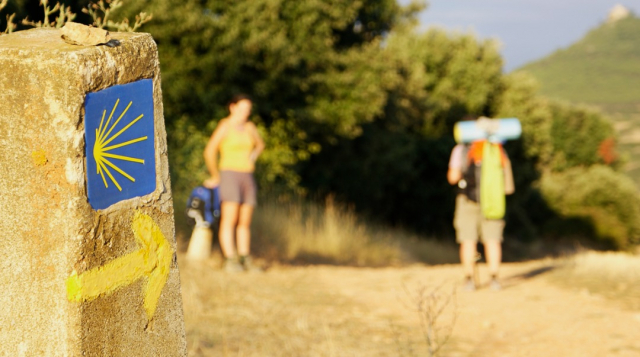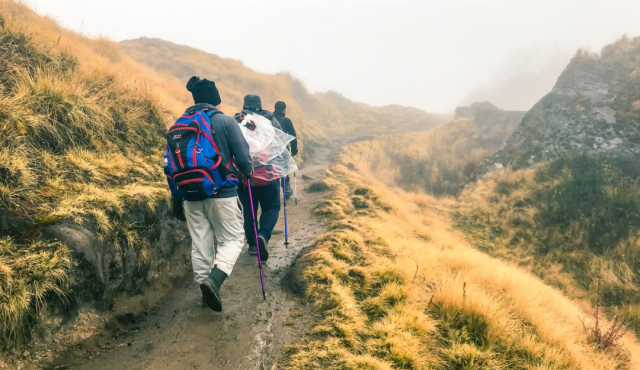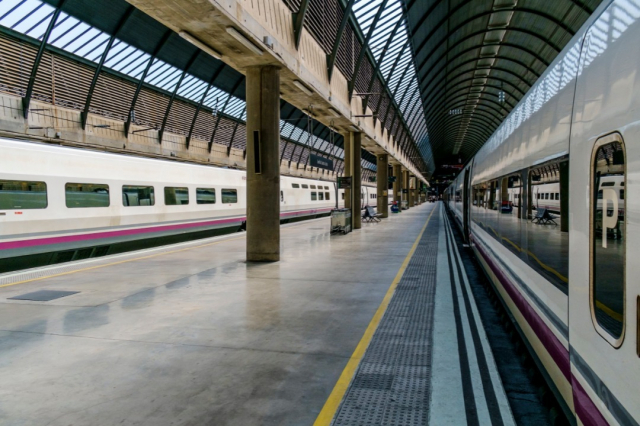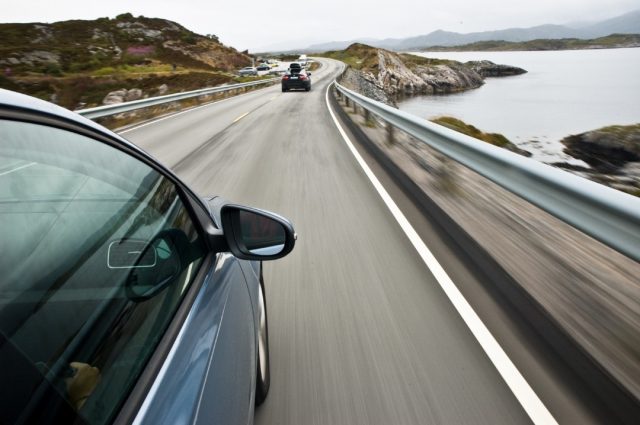Camino de Santiago from Vigo: Guide of stages
Camino de Santiago from
We tell you everything you need to know to do the Camino de Santiago from Vigo: tips, secrets, where to sleep, what to see and how long it will take to get to Santiago de Compostela.
- Camino de Santiago from Madrid
- Camino de Santiago from León
- Camino de Santiago from Sarria
- Camino de Santiago from Roncesvalles
- Camino de Santiago from A Coruña
- Camino de Santiago from Seville
- Camino de Santiago from Ponferrada
- Camino de Santiago from Burgos
- Camino de Santiago from Ourense
- Camino de Santiago from Bilbao
- Camino de Santiago from Oporto
- Camino de Santiago from Lisboa
- Camino de Santiago from Barcelona
- Camino de Santiago desde Pamplona
- The Camino de Santiago from Irun
- The Camino de Santiago from Astorga
- Camino de Santiago from Valencia
- The Way of Saint James from Saint-Jean-Pied-de-Port
- Camino de santiago from Viana do Castelo
- Doing the Way of Saint James from Zamora
- Doing the Way of Saint James from Zaragoza
- Doing the Way of Saint James from Alicante
- Camino de Santiago from Santander
- Camino Portugués from Coimbra
- Camino de Santiago from San Sebastián
- Camino de Santiago from Vigo: Guide of stages
- Camino de Santiago from Salamanca
- Camino de Santiago from Villafranca del Bierzo
- Camino de Santiago from Pontevedra
- Do the Camino de Santiago from Almería
- Camino de Santiago from Valladolid
- Doing the Way of Saint James from Navarra
Why? do the Camino de Santiago from Vigo?
Vigo is one of the points or stops of the Portuguese Coastal Way, one of the most recommended routes for all those pilgrims who want to enjoy a true coastal paradise. This variant allows us to fully immerse ourselves, almost never better said, in the entire Galician coast from the north of Portugal to Pontevedra.
The Camino Portugués along the Coast is an alternative to the Camino Portugués, and although the latter is one of the most widespread and well-known routes for pilgrims, the Camino Portugués ;s along the Coast has become one of the favorite routes thanks to offering a unique experience through several of the most unmistakable Galician landscapes. Of course, this variant is somewhat longer than the Camino Portugués.
However, it must be taken into account that the Portuguese Coastal Way, starting from Vigo, will barely take us half a mile. a stage; More than enough for us to enjoy the spectacular landscapes that we find in our path. After the first stage from Vigo to Redondela, the trip merges with the conventional Portuguese Way.
What? to take into account before doing the Camino de Santiago from Vigo?
Before getting into talking about the different stages that make up the Camino de Santiago from Vigo, it is important to mention several tips, roughly speaking, that will be of great help when you start your adventure and in which we will delve further. forward. The first and most notable is exploring which is the best What time of year to do the Camino de Santiago. You can't forget about everything you need to take with you either. or yes It will be with you in the backpack, although of course taking into account the weight of the luggage.
From Vigo to Santiago de Compostela, just over 100 kilometers await you ahead, a long pilgrimage in which you should also value important aspects such as footwear , something that is directly linked to the time of year chosen for the trip. Are you going to do the Camino de Santiago by bike, on foot or, on the contrary, do you opt for the vehicle? Questions you should also rethink.
All the stages of the Camino de Santiago from Vigo
Halfway between the Portuguese Coastal Way and the conventional Portuguese Way, the route from Vigo does not present too many problems for the pilgrim who wants to travel from this city to the Cathedral of Santiago. The trip is over. It will be made up of a total of five stages, resulting in an experience of a total of 112 kilometers from the start in Vigo to our arrival in Santiago.
- Stage 1: Vigo - Redondela (16km)
- Stage 2: Redondela - Pontevedra (18 km)
- Stage 3: Pontevedra - Caldas de Reis (23 km)
- Stage 4: Caldas de Reis - Padrón (19 km)
- Stage 5: Padrón - Santiago de Compostela (25 km)
Stage 1: Vigo - Redondela
The first stage has, as you might already be imagining if you are reading this, the city of Vigo as the protagonist. A place worth stopping to immerse ourselves in its gastronomic tradition or culture. Starting from Vigo we will travel through a fairly simple path and in which we only have to take into account that we will find few establishments where we can stop to eat. However, we are talking about a relatively short stage that should not present any problem.
Stage 2: Redondela - Pontevedra
During this stage, the trip will take us to the rest of the world. Through rural landscapes Arcade, popular with pilgrims for its oysters. We will also go through the Reiriño forest to Pontevedra, being one of the most charming stages of this Camino de Santiago. In Pontevedra we can stop if the weather is good to enjoy the beautiful architecture of the city, its gastronomy, culture and rich history.
Stage 3: Pontevedra
Already fully immersed in the Camino Portugués we find a stage that will take us through the Camino. Through Briallos and Alba, traversing long river paths and eucalyptus forests. We will finish the stage in Caldas de Reis, a very famous place in Galicia for its thermal waters, perfect for resting after a few kilometers on our backs.
Stage 4: Caldas de Reis - Padrón
During this stage we will cross beautiful medieval bridges, stopping to visit the Church of Santa María de Cruces and ending in Padrón. Did you know that this is the town where the famous Padrón peppers originated? It is also the birthplace of Rosalía de Castro, one of the most famous Galician authors.
Stage 5: Padrón - Santiago de Compostela
The last of the pushes until you reach Santiago de Compostela is also the longest stage, so you should have rested as much as possible the night before. A journey that beyond of its distance will not pose us any question. There were too many problems, being the final stages like Teo or Milladoiro the ones that will give us the necessary encouragement until we reach Santiago.
How to walk the Camino de Santiago from Vigo?
There are several options to walk the Camino de Santiago. Whether on foot, by car or by bike, even by boat! However, and taking into account that we are talking about traveling the Camino de Santiago from Vigo, it is best to do it on foot. A journey that will take us through This takes a total of five days, a more than acceptable time, and with which we should not have too many problems opting for this method.
Although cycling can also be a tempting alternative, remember that for to do the Camino de Santiago by bicycle a total of 200 km will be necessary, as opposed to 100 km if we travel the pilgrimage on foot.
When to do the Camino de Santiago from Vigo?
One of the most important decisions when doing the Camino de Santiago, regardless of the route, is choosing a suitable time of year. In Vivecamino we have already explored one by one the stations to carry out the Xacobea route, with the advantages and negative points of each and every one of them.
Summer is a time very chosen by pilgrims, after all it is when the vast majority can enjoy the holidays and incidentally the good weather. However, high temperatures can become a serious problem to progress stage by stage, even starting from Galicia! Winter is not highly recommended either. The rain and the cold can slow down our progress, so it is also another time that we must park.
That said, and as we usually recommend on most routes, spring is without a doubt the best option for doing the Camino de Santiago. The weather accompanies, finding cool temperatures without the extremes of summer and winter; and on the roads it is not difficult to find other pilgrims although without the massification of the summer months.
Essential tips for completing the Camino de Santiago from Vigo
There are many tips for doing the Camino de Santiago, almost adapted to each type of pilgrim. However, there is a whole series of recommendations that are little more than universal. At Vivecamino we have already explored many of the essential tips for completing the Camino de Santiago no problem. Below you will find a list of tips that, as far as possible, you should try to comply with.
The first and most important mentions footwear. Some good ones boots for the Camino de Santiago they will become your best travel companion. Keep in mind that it will be five days of crossing trails and all types of terrain, so having footwear that adapts perfectly to the trip without your feet suffering at the end of the day is little more than vital. Depending on the time of year or the route, it will be convenient for you. More to choose between mountain shoes or boots.
Another very important piece of information that you should attend to as soon as possible: the backpack. Choosing a good backpack that is comfortable and capable of managing all your luggage is crucial, but knowing how much weight to put on it is even more important. More than knowing what is it? If you want to carry in your backpack for the Camino de Santiago, our recommendation is that you start from a simple rule: luggage should be 10% of your weight.
We move on to another of those points that no pilgrim should overlook: physical condition. It is of little or no use to prepare the Camino de Santiago from one day to the next. It would be a real mistake. Doing the Camino de Santiago is a stage that begins several months ago, before leaving Vigo as in this case. We recommend that you prepare yourself physically for at least two months by taking several walks and walking routes through different types of terrain. As you progress you can not only add a few more kilometers, but also add slopes. Just like that. You will be able to be consciously prepared for the Camino de Santiago. If you want to know what is it? What physical preparation do you need for the Camino de Santiago, at Vivecamino we have prepared a complete article about it.
The Camino de Santiago from Vigo for the elderly
Older pilgrims shouldn't have any problem doing the Camino de Santiago from Vigo. Throughout the different stages it is very easy to find hostels and restaurants where you can stop to rest and recharge your batteries.
Of course, the Camino de Santiago is the same for everyone regardless of age. We are referring to one of the basic aspects, physical preparation. In this case, starting with a training for the pilgrimage can take several months and a somewhat more gradual progress, but in any case, of course, it will end. worth it.
As we have already mentioned, the Camino Portugués is one of the busiest routes, so in case we have any kind of problem in the stages it will be necessary to take care of it. It is common to find pilgrims who will pleasantly help us.
Where to eat and where to sleep?
As it is the Portuguese Way, and one of the busiest, the Camino de Santiago from Vigo does not offer any type of inconvenience for the pilgrim in terms of rest and places to eat.
During the five stages that separate us until we arrive in Vigo we will find different restaurants and bars where we can enjoy local and Galician gastronomy. However, and in case you don’t want to spend too much in these places, you can always opt for the economical route: the menu’ of pilgrim. There are not a few bars and restaurants located in the stages of the Camino de Santiago that offer this alternative, highly recommended both for quantity and price.
As far as sleeping is concerned, the Camino de Santiago from Vigo presents the most varied options for the pilgrim. Public shelters are present, undoubtedly the economic alternative. On the contrary, those travelers who prefer a little more privacy, private hostels or hostels are another feature that will also be useful. easy to find.
How to get to Vigo to do the Camino de Santiago?
Vigo is one of the most important cities in Spain and of course Galicia. A place worth stopping to immerse ourselves in its culture, history and incidentally the long gastronomic tradition that the entire Galician region can also boast of.
Being the starting point for this trip on the Camino de Santiago, getting to Vigo is quite simple regardless of the means of locomotion chosen and the area from where we start. Let's see a little more in detail how to get to Vigo from different parts of Spain.
How to get to Vigo by train
In case you want to get to Vigo from Madrid, the Madrid-Chamartín’ station is the recommended alternative. A journey that will take us through approximately 5 and a half hours, also finding several trains throughout the day that further facilitate flexibility to get to the Galician city and adjust to your needs. ;
In case you leave from Barcelona, the trip to Vigo by train is somewhat longer compared to Madrid. However, it remains a feasible and recommended option. One of the alternatives most used by pilgrims is the train-hotel, a direct trip from Barcelona-Sans that arrives in Vigo in 11 to 12 hours . Undoubtedly the most profitable option since it allows us to rest on the train overnight.
If you want to get to Vigo from the South of Spain, you may need to make a transfer. If you travel from Seville or Málaga you should take a direct train to Madrid and from here you can get to Madrid. to Vigo following the previous indications. In total, the journey can take up to 7 or 10 hours.
How to get to Vigo by car
Taking the same areas as in the previous case as an example, getting to Vigo by car from Madrid is a fairly direct route. A path that will lead us to around 6 hours, though of course depending on traffic. Leaving Madrid by the A-6 we must get to Benavente, taking here the road. the A-52, known as the Autovía de las Rías Bajas and being the road that will take us to the town. to Vigo.
The journey from Barcelona takes up to 11 hours if we decide to travel by car. From Barcelona we will take the AP-7 to Tarragona. Once we arrive at Lleida, we will take the A-2 in the direction of Zaragoza and then continue to the A-23 to head towards Soria. From here we would have to be careful to take the A-11 and A-62 to Benavente. From here, and as from Madrid, we would take the A-52 to Vigo.
Depending on the starting point, traveling to Vigo from the South of Spain can take more or less time. From Seville the trip can take 7 or 8 hours, starting on the A-66, also known as the Autovía de la Ruta de la Plata, up to Benavente. From here we would take the A-52 to get, now yes, to Vigo.
How to get to Vigo by plane
The plane ride from Madrid to Vigo is quite fast. Either through companies such as Iberia or Air Europa, among others, it is not difficult to find direct trips from the Adolfo Suárez Madrid-Barajas Airport to the Vigo Airport. A flight that lasts approximately one hour and a quarter. Once in the Galician city we can take the necessary taxi or bus to reach our destination.
From Barcelona it is also very easy to fly to Vigo. Several airlines are available with which to find direct flights from Barcelona-El Prat Airport to Vigo Airport. A journey that will not take us anywhere. more than an hour and a half. In the same way as from Madrid, once at our destination we can take a taxi or bus to the center of the city.
Traveling by plane from the south of Spain to Vigo may require a stopover, depending on the weather. from the city of origin. For example, from Seville, you can fly directly to Vigo with an airline. However, from Malaga or Granada you may have to make a stopover in Madrid or Barcelona. A trip that can take a total of 3 or 5 hours.
How to return home from Santiago de Compostela when we finish the Camino de Santiago?
Santiago is one of the best communicated cities in Spain, so returning home regardless of where you are will not be difficult. complicated. Santiago’s airport, Lavacolla, is only 11 kilometers from the city; Telling that there is also availability of an intercity bus that can take us there.
In addition to the airport, Santiago has a bus and train station with which to return home after completing the Camino de Santiago. The Intermodal Station, located on Calle Clara Campoamor, is very accessible even on foot, being just over 10 minutes from the old part of the city.
At the station we find a wide variety of destinations that demonstrate the good communication between Santiago and the rest of Spain. Trains to Madrid, Bilbao, Barcelona, as well as buses to destinations such as France, Portugal or Germany are very common.
- Camino de Santiago from Madrid
- Camino de Santiago from León
- Camino de Santiago from Sarria
- Camino de Santiago from Roncesvalles
- Camino de Santiago from A Coruña
- Camino de Santiago from Seville
- Camino de Santiago from Ponferrada
- Camino de Santiago from Burgos
- Camino de Santiago from Ourense
- Camino de Santiago from Bilbao
- Camino de Santiago from Oporto
- Camino de Santiago from Lisboa
- Camino de Santiago from Barcelona
- Camino de Santiago desde Pamplona
- The Camino de Santiago from Irun
- The Camino de Santiago from Astorga
- Camino de Santiago from Valencia
- The Way of Saint James from Saint-Jean-Pied-de-Port
- Camino de santiago from Viana do Castelo
- Doing the Way of Saint James from Zamora
- Doing the Way of Saint James from Zaragoza
- Doing the Way of Saint James from Alicante
- Camino de Santiago from Santander
- Camino Portugués from Coimbra
- Camino de Santiago from San Sebastián
- Camino de Santiago from Vigo: Guide of stages
- Camino de Santiago from Salamanca
- Camino de Santiago from Villafranca del Bierzo
- Camino de Santiago from Pontevedra
- Do the Camino de Santiago from Almería
- Camino de Santiago from Valladolid
- Doing the Way of Saint James from Navarra
Routes
Blog
 How to get to Sarria to do the Camino de Santiago
How to get to Sarria to do the Camino de Santiago
 Descubre la magia del Camino de Santiago Portugués por la costa
Descubre la magia del Camino de Santiago Portugués por la costa
 5 tours culturales que puedes hacer en Galicia si decides hacer un alto en el camino
5 tours culturales que puedes hacer en Galicia si decides hacer un alto en el camino
 Doing the Camino de Santiago in June: What you should know?
Doing the Camino de Santiago in June: What you should know?
Information
Points of interest
Cities & Towns | Hostels | Lodgings | Restaurants | Saddlery | Doctors | Points of interest | Bikes workshop
Contact us | Privacy policy | Cookies policy | | Terms of use | Authorship | Web Map | Consentimiento
© Copyright LA VOZ DE GALICIA S.A. Polígono de Sabón, Arteixo, A CORUÑA (ESPAÑA) Inscrita en el Registro Mercantil de A Coruña en el Tomo 2438 del Archivo, Sección General, a los folios 91 y siguientes, hoja C-2141. CIF: A-15000649
Developed and managed byHyliacom






